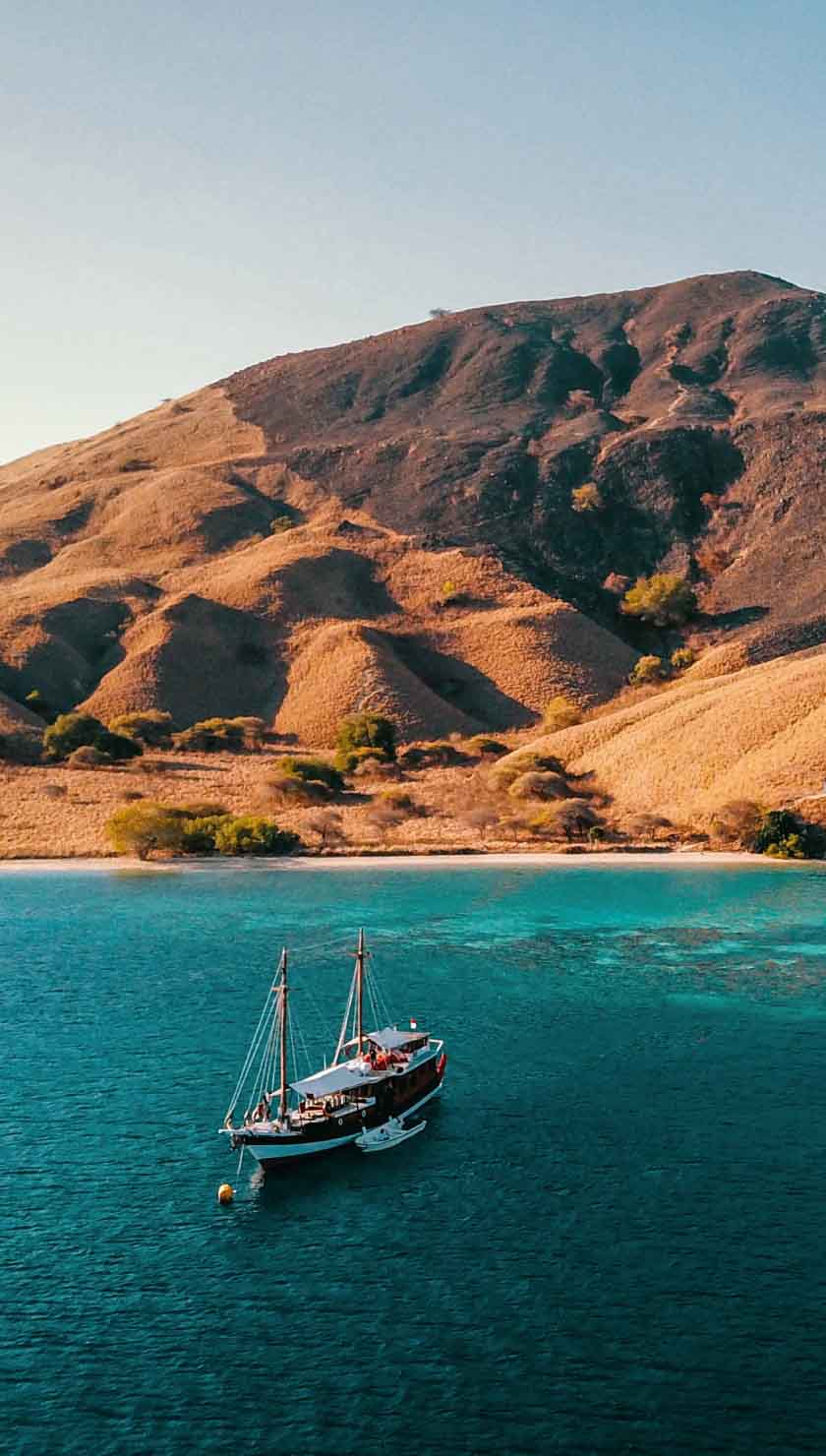The Best Small-Ship Cruises Along Croatia’s Coast
Blend ancient heritage and turquoise coves on the Adriatic.
Croatia’s Adriatic coastline is a masterpiece shaped by wind, stone, and sea. From the limestone walls of Dubrovnik to the lavender-scented hills of Hvar, its islands rise like emeralds from waters so clear they seem illuminated from below. Sailing here feels like drifting through a living tapestry—ancient ports, pine forests leaning over cobalt inlets, and secluded coves accessible only by vessels small enough to slip past the rugged coastline’s hidden folds.
Small-ship cruising reveals a Croatia that the larger vessels can only skirt. Aboard an intimate yacht or classic wooden cruiser, the pace becomes unhurried and deeply connected to the sea. Mornings begin with the sparkle of Mediterranean light, afternoons unfold in sheltered bays where the only sound is your splash into warm water, and nights anchor beneath skies dense with constellations once used by Venetian captains who mapped these same channels.
This is the Adriatic at its most authentic—an archipelago of more than a thousand islands, each shaped by layers of Illyrian, Roman, Byzantine, and Venetian history. Small ships can moor at tiny fishing villages, wander into car-free medieval towns, and navigate narrow harbors where larger vessels cannot venture. The result is a journey defined by intimacy: intimate ports, intimate landscapes, and intimate encounters with Croatia’s living heritage.
About Croatia’s Adriatic Coast
Croatia’s Adriatic coastline stretches over 1,700 kilometers, weaving past limestone cliffs, vineyard-covered slopes, and hundreds of islands scattered like stepping stones along the Dalmatian Coast. The geography here is a wild mosaic of blue-green coves, sun-drenched beaches, and forests of Aleppo pine that perfume the air. Medieval towns cling to the water’s edge, their terracotta roofs glowing at sunset, while traditional fishing villages preserve rhythms that have changed little in centuries.
This region’s cultural identity is shaped by the Adriatic itself. Venetian fortresses crown hilltops, Roman palaces spill into modern streets, and UNESCO-listed cities like Dubrovnik and Split preserve layers of merchant wealth, maritime power, and Mediterranean trade. Island communities continue to produce wine, olive oil, and salt much the way their ancestors did, and evenings in port might include klapa singing echoing through stone alleys or fishermen mending nets beneath lantern light.
Small ships are uniquely suited to exploring this intricate coastline. Their shallow draft and compact size allow them to navigate narrow channels, slip into secluded bays, and dock directly in historic harbors where large cruise ships anchor offshore. They enable flexible itineraries—lingering at a swim stop, adjusting routes for weather or whim, and visiting car-free islands like Lopud or towns such as Korcula that reward slow exploration.
Highlights of Small-Ship Cruises in Croatia
Dubrovnik: The Pearl of the Adriatic
Dubrovnik is a city of stone and light, a walled citadel rising above the sea with majesty that has endured for centuries. From the decks of a small ship, you approach its medieval ramparts much as mariners once did—passing sea gates carved with centuries of salt and conflict. Inside the Old Town, polished limestone streets reflect warm Adriatic sun, while baroque churches, monasteries, and merchant palaces stand as reminders of its former republic.
Small ships often dock close to the old harbor, providing travelers with easy access to its labyrinthine lanes, cliffside viewpoints, and the walk along the famous walls. In the evening, the city glows gold, lanterns flickering on café terraces as the scent of grilled seafood drifts from harborfront restaurants.
Split & Diocletian’s Palace
Split is a city built inside a Roman emperor’s retirement palace—one of the most extraordinary urban experiences in Europe. Diocletian’s Palace is a living monument: laundry hangs between 1,700-year-old walls, wine bars are tucked beneath ancient arches, and a cathedral is built into the former mausoleum. Small-ship itineraries frequently begin or end in Split, allowing ample time to wander its atmospheric alleys or ascend Marjan Hill for panoramic views of the harbor.
Beyond the city, the islands of Brac and Šolta offer secluded swim bays and quiet fishing villages perfect for slow afternoons at anchor. Split’s blend of antiquity, modern Dalmatian culture, and easy access to island-hopping routes makes it one of the Adriatic’s essential ports.
Hvar: Lavender Hills & Venetian Fortresses
Hvar exudes Mediterranean glamour, yet its soul remains deeply rooted in history and nature. Known for its lavender fields, vineyards, and crystalline coves, the island stretches beneath a sun that shines over 2,700 hours each year. Approaching by small ship grants access to the heart of Hvar Town, where stone palaces and Venetian loggias frame a lively waterfront.
Climb to the fortress for views over the Pakleni Islands—another favorite for swim stops. In quieter villages like Stari Grad and Vrboska, the pace slows, revealing olive groves, dry-stone terraces, and a rural life shaped by centuries of maritime tradition and agriculture.
Korcula: Wine Country & Medieval Streets
Often called “Little Dubrovnik,” Korcula is a marvel of medieval town planning, with its streets arranged in a fishbone pattern to temper the Adriatic winds. Encircled by defensive walls, the Old Town is home to ornate balconies, stone stairways, and the traditional sword dance known as the Moreška. Korcula’s hinterland is equally captivating—home to some of Croatia’s finest white wines, including the indigenous varietals Pošip and Grk.
Small ships frequently spend evenings here, allowing travelers to explore taverns serving local seafood or join excursions into the vineyards of Lumbarda. The combination of cultural depth, quiet coves, and culinary tradition makes Korcula a cornerstone of any Dalmatian Coast cruise.
Kornati National Park
Kornati National Park is a dazzling archipelago of limestone islands scattered across a sea so intensely blue it feels almost surreal. Comprising more than 80 islands and islets, this protected wilderness is often described as a “nautical paradise,” its stark white cliffs, dry-stone terraces, and sculpted ridgelines forming a landscape shaped by wind, salt, and generations of shepherding. Small ships are uniquely able to navigate their narrow channels, anchoring in secluded bays where silence is broken only by distant gulls and the soft lapping of the sea.
The water here is impossibly clear, revealing underwater meadows, reefs, and fish flickering like quicksilver beneath the surface—ideal for snorkeling straight off the stern. As you sail past the famous “crowns,” the steep outer cliffs that plunge dramatically into the deep, you feel the raw geology of the Adriatic laid bare. Evenings often end at one of Kornati’s remote konobas, where fishermen serve grilled calamari, island herbs, and local olive oil under lantern light, connecting travelers to a maritime culture as timeless as the stones themselves.
Mljet National Park: Lakes & Pine Forests
Mljet is Croatia’s greenest island—a sanctuary of saltwater lakes, deep forests, and ancient myths. According to legend, Odysseus was enchanted by the nymph Calypso here, and one look at its emerald waters makes the story easy to believe. Small ships anchor near Pomena or Polace, offering immediate access to Mljet National Park’s walking trails, kayaks, and peaceful inlets where pine needles perfume the breeze.
The island’s Veliko and Malo Jezero lakes are ideal for swimming or exploring by bike, while a tiny 12th-century monastery sits on an islet at their center. Mljet embodies the restorative side of small-ship cruising—quiet, contemplative, deeply connected to nature.
Zadar Archipelago
The Zadar archipelago is one of the Adriatic’s most enchanting island groups—an unspoiled labyrinth of reefs, pine-shaded inlets, and serene fishing villages scattered across a sea of shimmering silver-blue. Small ships weave between more than 300 islands and islets, from the rugged cliffs of Dugi Otok to the quiet coves of Molat, Silba, and Olib, where time seems to move at the pace of the tides. This region is a sanctuary for swimmers and snorkelers: waters so clear they reveal white-sand bottoms and swaying seagrass meadows, and bays where you may anchor alone beneath circling gulls.
Onboard excursions often include the otherworldly cliffs of Telašcica Nature Park and the saltwater lake hidden within its embrace, as well as the pristine beaches of Saharun—famed for its turquoise shallows. In the evenings, small ships can dock near Zadar’s ancient waterfront, where Roman streets, medieval churches, and the hypnotic Sea Organ create a poetic finale to days spent exploring one of Croatia’s wildest island realms.
Hidden Coves, Blue Caves & Swim Stops
One of the most lavish luxuries of small-ship cruising in Croatia is the freedom to stop wherever the water shimmers brightest. Captains know dozens of hidden coves—pockets of turquoise framed by cliffs, anchored beneath pine forests or white-pebble beaches. Many itineraries include daily swim stops in bays unreachable by road, from the luminous Blue Cave of Biševo to the lagoons of the Pakleni Islands or secluded coves around Brac and Šipan. Jumping directly from the ship’s swim platform into warm, impossibly clear water is a defining part of the Adriatic experience—one that larger ships cannot offer.
Cruise Itineraries in Croatia
Short Cruises (3–5 days)
Short itineraries are perfect for travelers seeking a concentrated taste of the Adriatic—ideal pairings with land travel in Croatia. Popular routes include Split–Hvar–Vis, offering a blend of Roman history, island nightlife, and unspoiled natural beauty. Another favorite is Dubrovnik–Korcula–Mljet, where medieval streets meet pine forests and swim-stop bays. These compact journeys emphasize relaxation, featuring mornings at anchor, leisurely coastal sails, and evenings spent exploring waterfront promenades illuminated by lanterns. Despite their brevity, short cruises feel rich and immersive due to the close proximity of the islands.
Medium Cruises (6–9 days)
The classic Adriatic itinerary is a week-long voyage between Split and Dubrovnik. These routes combine iconic islands—Hvar, Korcula, Brac, and Mljet—with time for cultural explorations, vineyard tastings, and daily stops for swimming in secluded coves. Travelers might begin at Diocletian’s Palace, sail past the Pakleni Islands, anchor near Korcula’s medieval walls, and end with Dubrovnik’s majestic skyline. Medium-length cruises strike the perfect balance between depth and variety, allowing room for spontaneous detours and local traditions, such as oyster tasting in Ston or lavender walks in Hvar.
Long Cruises (10+ days)
For travelers seeking a comprehensive journey across the Adriatic, extended itineraries offer a more profound sense of place. Some voyages explore the northern coast—reaching the Istrian Peninsula with stops in Rovinj, Pula, and the Venetian-influenced town of Cres. Others venture south into Montenegro’s Bay of Kotor, where sheer mountains plunge into tranquil waters reminiscent of a Nordic fjord. Longer trips weave together remote islands, traditional fishing villages, national parks, and quieter harbors that would otherwise remain off the map. These itineraries reward curiosity and provide a fuller understanding of Croatia’s maritime heritage.
Special Interest Cruises
Croatia’s diverse landscapes, culinary traditions, and seafaring culture inspire a range of themed cruises. Wine-focused itineraries visit family-run vineyards on Korcula, Hvar, and Pelješac, pairing tastings with regional seafood. Culinary cruises feature onboard chefs who source ingredients directly from island markets.
Photography voyages capitalize on Croatia’s intense Mediterranean light, striking coastlines, and historic towns. History-focused itineraries delve into Roman ruins, medieval fortresses, and Venetian maritime routes. Nature cruises emphasize national parks, such as Krka, Mljet, and Telašcica, and include time for swimming, kayaking, and snorkeling in secluded lagoons.
Something for Everyone
- Couples seeking romance will find no shortage of intimate moments: sunset sails past terracotta rooftops, dinners on deck beneath starlight, and evenings wandering medieval towns arm in arm. The Adriatic’s golden light and quiet harbors set the perfect stage for meaningful escapes.
- Adventure travelers will appreciate the daily opportunities for engaging in various activities. Swim in turquoise coves, snorkel above rocky reefs, hike fortress paths in Hvar, or kayak through Mljet’s saltwater lakes. Small ships offer easy access to landscapes that are well-suited for exploration.
- Culture lovers will revel in Croatia’s multilayered history: Illyrian ruins, Roman palaces, Venetian squares, Orthodox monasteries, and fishing villages where old traditions still thrive. Every port invites discovery, from hidden chapels to bustling markets.
Life Onboard a Small Ship in Croatia
Life aboard a Croatian small ship blends comfort with rustic Mediterranean charm. Meals are often prepared by an onboard chef who showcases local seafood—such as grilled octopus, fresh sardines, and mussels from Ston—and pairs dishes with Dalmatian wines from islands like Korcula or Hvar. Breakfast unfolds on deck with the scent of coffee mingling with the sea breeze, while dinners feature warm conversations against the backdrop of gentle waves.
Outdoor decks become the heart of daily life: places for sunbathing, reading, sharing stories, or simply watching the changing colors of the Adriatic. Many ships feature swim platforms that open directly into the water, inviting spontaneous dips in secluded bays. Evenings might be spent anchored beneath the stars, listening to cicadas along distant shores.
The atmosphere aboard is intimate and personal. With fewer guests, crew members quickly learn the names and preferences of their fellow passengers, fostering a sense of community. Schedules are flexible, allowing for extra swim stops, visits to quiet villages, or extended time exploring a favorite island.
Best Time to Cruise Croatia
High season—June through August—offers long, sun-filled days, lively island towns, and warm seas ideal for swimming. This is the Adriatic at its most vibrant, with festivals, open-air concerts, and extended evening hours along waterfront promenades.
Shoulder seasons—May, September, and October—provide a quieter, more contemplative experience. The light becomes softer, the sea remains pleasantly warm, and towns are less crowded. These months are favorites among photographers and travelers seeking tranquil landscapes.
The weather is generally stable, with gentle winds and mild seas, though early spring and late autumn can bring cooler evenings. Sea temperatures peak in late summer, perfect for daily swim stops and snorkeling in clear, calm bays.
Planning Your Adriatic Small-Ship Cruise
Most small ship cruises in Croatia depart from Split or Dubrovnik, both of which are well-connected to international airports and linked to numerous island-hopping routes. Travelers should book several months in advance—particularly for peak summer dates and newer luxury yachts.
Light packing is ideal: breathable layers, swimwear, comfortable walking shoes, and reef-safe sunscreen. A hat, sunglasses, and a reusable water bottle enhance comfort during sunny deck days and island excursions. Many ships offer snorkeling gear, but bringing personal equipment ensures the best fit.
Sustainable travel practices help preserve Croatia’s fragile island ecosystems. Choose reef-safe sunscreen, avoid single-use plastics, respect marine protected areas, and support local artisans and family-run restaurants in port towns.
Get Ready to Experience the Adriatic
Ready to explore Croatia the way it was meant to be experienced—up close, unhurried, and shaped by the sea? Discover authentic island-hopping, intimate harbors, and the magic of the Dalmatian Coast aboard a boutique vessel. Browse our curated collection of Croatia small-ship cruises and discover the Adriatic journey that resonates with your sense of wonder.










